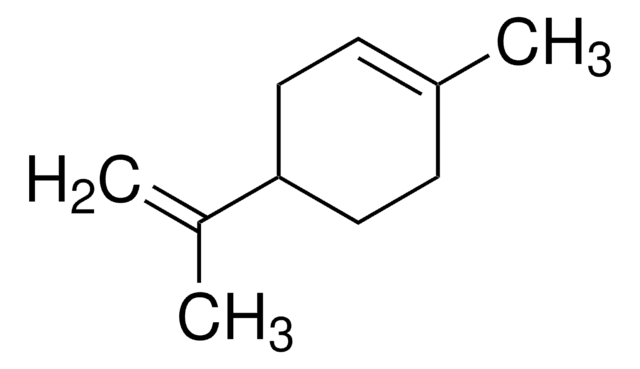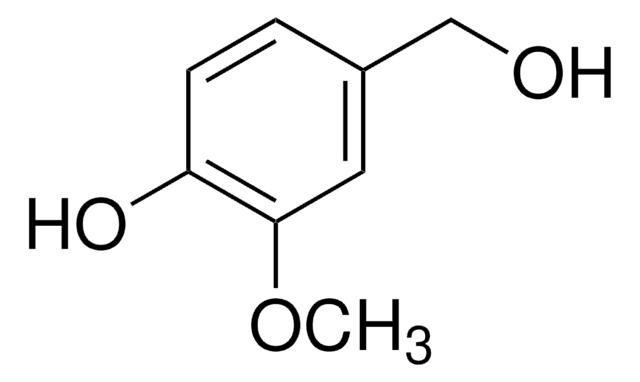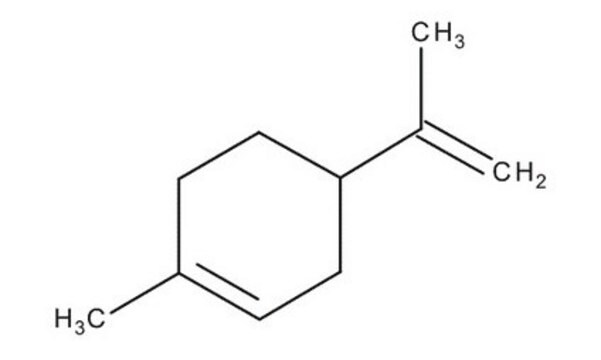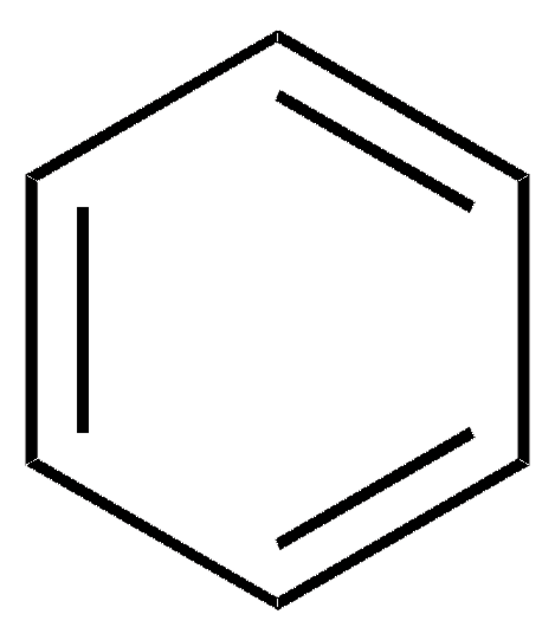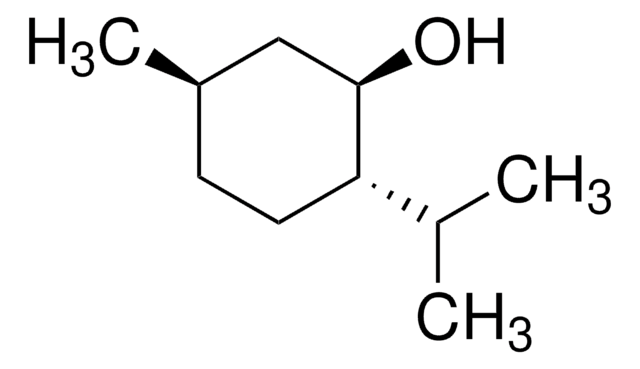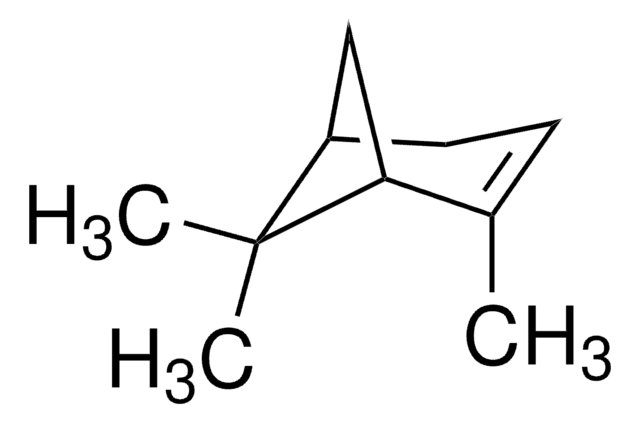Kluczowe dokumenty
62128
(S)-(−)-Limonene
analytical standard
Synonim(y):
(−)-p-Mentha-1,8-diene, (−)-Carvene, (S)-4-Isopropenyl-1-methyl cyclohexene
About This Item
Polecane produkty
klasa czystości
analytical standard
Poziom jakości
gęstość pary
4.7 (vs air)
ciśnienie pary
<3 mmHg ( 14.4 °C)
1 mmHg ( 20 °C)
Próba
≥99.0% (sum of enantiomers, GC)
aktywność optyczna
[α]20/D −94±4°, c = 10% in ethanol
okres trwałości
limited shelf life, expiry date on the label
granice wybuchowości
6.1 %
metody
HPLC: suitable
gas chromatography (GC): suitable
współczynnik refrakcji
n20/D 1.471 (lit.)
n20/D 1.473
bp
175-177 °C (lit.)
gęstość
0.844 g/mL at 25 °C (lit.)
Zastosowanie
cleaning products
cosmetics
flavors and fragrances
food and beverages
personal care
Format
neat
ciąg SMILES
CC(=C)[C@H]1CCC(C)=CC1
InChI
1S/C10H16/c1-8(2)10-6-4-9(3)5-7-10/h4,10H,1,5-7H2,2-3H3/t10-/m1/s1
Klucz InChI
XMGQYMWWDOXHJM-SNVBAGLBSA-N
Szukasz podobnych produktów? Odwiedź Przewodnik dotyczący porównywania produktów
Zastosowanie
Zastosowanie
Hasło ostrzegawcze
Danger
Zwroty wskazujące rodzaj zagrożenia
Zwroty wskazujące środki ostrożności
Klasyfikacja zagrożeń
Aquatic Acute 1 - Aquatic Chronic 1 - Asp. Tox. 1 - Flam. Liq. 3 - Skin Irrit. 2 - Skin Sens. 1B
Kod klasy składowania
3 - Flammable liquids
Klasa zagrożenia wodnego (WGK)
WGK 2
Temperatura zapłonu (°F)
123.8 °F - closed cup
Temperatura zapłonu (°C)
51 °C - closed cup
Środki ochrony indywidualnej
Eyeshields, Faceshields, Gloves, type ABEK (EN14387) respirator filter
Wybierz jedną z najnowszych wersji:
Certyfikaty analizy (CoA)
Nie widzisz odpowiedniej wersji?
Jeśli potrzebujesz konkretnej wersji, możesz wyszukać konkretny certyfikat według numeru partii lub serii.
Masz już ten produkt?
Dokumenty związane z niedawno zakupionymi produktami zostały zamieszczone w Bibliotece dokumentów.
Klienci oglądali również te produkty
Chromatograms
suitable for GCNasz zespół naukowców ma doświadczenie we wszystkich obszarach badań, w tym w naukach przyrodniczych, materiałoznawstwie, syntezie chemicznej, chromatografii, analityce i wielu innych dziedzinach.
Skontaktuj się z zespołem ds. pomocy technicznej

